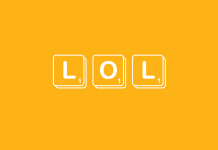Do you want to find out which are the most important cryptocurrencies in circulation? Maybe with a simple explanation of why they are successful and how do they differ? Do you simply want to know which are the best cryptocurrencies to invest in?
You are in the right place! Welcome to our list of the 14 best cryptocurrencies to invest in today.
Since the appearance of Bitcoin in 2009, thousands of projects have sprung up to develop virtual currencies. Many of these have failed miserably, while others have established themselves and have grown steadily.
The cryptocurrency market is one of the new frontiers of investment, but also a new way of thinking about exchanges:
- Without intermediaries
- With low or no brokerage costs
- Very fast
Cryptocurrencies are interesting because they offer speculative traders a very volatile asset, therefore potentially very profitable even on a daily basis ( cryptocurrency charts are very useful in this case) However, they are also incredibly interesting for long-term investors who do not want to exploit large short-term fluctuations, but they prefer to invest their capital in a commodity that will most likely rise in price in the future.
On the internet, it is easy to find various success stories related to this type of investment. In a way, we are seeing a new gold rush.

Table of Contents
How to invest in the best cryptocurrencies
Before, to invest in a cryptocurrency, you had to physically buy it, like when you want to invest in gold or any other currency.
Normally, you would go and buy gold in person or trade euros or dollars for the currency you want to buy.
As you can imagine, everything was somewhat inconvenient , especially when it comes to cryptocurrencies, which require much above-average technical skills to be purchased and maintained.
For anyone who wants to physically possess the good, there is no other way. Basically, you need to go to the cryptocurrency’s official website, and follow the instructions to buy and store it, usually with a digital wallet.
However, if you simply want to invest in the ups and downs of the intrinsic value of cryptocurrency, there are much faster and more comfortable methods.
Here is what we believe is the best method.
The best way to invest in the most important cryptocurrencies:
The easiest and most comfortable way to invest in cryptocurrencies is with CFDs. CFDs (Contracts for Difference) are derivative contracts managed by financial brokers. This means that you can invest and speculate on the value of the cryptocurrency, without having to own it.
CFDs reflect the current price of the asset to which they refer (in this case Bitcoin, Ethereum and other cryptocurrencies), and you will be able to sell and buy these derivatives like any other stock (with all the relevant benefits).
Here are some interesting features:
Since financial brokers manage CFDs, you can definitely use leverage. When used correctly, leverage allows the investor to open positions at a significantly higher value than he could have afforded by investing only his own capital;
CFD contracts can be both bought and sold. This means that, for example, you can speculate and bet on the loss of value of cryptocurrencies, such as when a financial bubble explodes (the Bitcoin bubble is very famous);
There are many features to support trading that increase its safety and convenience: buy and sell orders, which are activated under certain conditions; o stop-loss and take-profit, which manage profits and losses automatically.
The best brokers with which to invest in the main cryptocurrencies
In our opinion, the best broker with which to invest in cryptocurrencies with CFDs is eToro.
eToro not only offers all the benefits we have talked about, but much more.
With eToro, you can take advantage of their Social Trading Network , that is a network with thousands of traders who share ideas, considerations and strategies on the markets and trading every day.
Furthermore, you can directly leverage the network by copying both manually and automatically the cryptocurrency operations of other traders.
But we’re not done yet.
eToro is renowned for its innovative spirit and the creation of new investment products.
One of the last, certainly among the most successful, is the CopyFund. While there are many such funds, eToro has created one just for cryptocurrencies: eToro Crypto CopyFund.
In short, the most important cryptocurrencies are grouped into a single fund where you can invest easily by buying a stock, as for the CFDs we described earlier.
Top 14 Best Cryptocurrencies Ever to Invest in Today
By investing in a fund you can take advantage of diversification and minimize risk. Buying this product is a convenient and beneficial solution for anyone who wants to invest in cryptocurrencies for the long term.
So let’s take a look at the best cryptocurrencies those that have established themselves on the international scene, and their distinctive characteristics.

1. BITCOIN: the first and inimitable (but perhaps a little dated) cryptocurrency
Introduction: Bitcoin is the most used and famous of all. The reason for his success lies in the fact that he was the first to show up on the scene. The first cryptocurrency was born thanks to a network and a new technology called blockchain (which is behind the functioning of Bitcoin). A technology that opens the door to a new world of possibilities in which many companies and start-ups are investing.
History: The creation of Bitcoin dates back to January 2009, when the first open-source version was launched. The creator of Bitcoin is Satoshi Nakamoto , a mysterious figure whose secret identity has become famous since the rise of the incredible cryptography underlying Bitcoin. In April 2016, Australian entrepreneur Craig Wright claimed to be the man behind Satoshi Nakamoto and provided a series of evidence to support this revelation; many still doubt that this is true. Here you can find the full history of Bitcoin.
Features: Bitcoin is implemented with a peer-to-peer system in Nick Szabo’s b-money project and Wei Dai’s Bitgold project. The principle behind Bitcoin is described in the “white paper” written by Satoshi Nakamoto in 2008. The official client, Bitcoin Core, is a free software born from a code written directly by Satoshi Nakamoto to implement the communication protocol and the peer network -to-peer. When we talk about “bitcoin” (small b) we mean the currency; while with “Bitcoin” (capital B) we mean the open source system.
Main uses: being a real currency, bitcoins are used for all types of virtual transactions. The first uses were simple exchanges of money between individuals (with the advantage of very low commissions). Over time, more and more entities began accepting bitcoin payments. The anonymity associated with Bitcoin also makes it the perfect currency for criminal activities of all kinds. Today, bitcoins are everywhere, from ATMs to ( almost ) ETF funds.
Opinion: Bitcoin is definitely one of the most exciting innovations of our times and with infinite potential (especially its blockchain technology). Pros and cons? Among the pros, there is the security of transactions, anonymity, accessibility by anyone anywhere in the world and low fees. As cons: the ease with which criminal and immoral activities can be carried out, the risk of physically losing bitcoins (they can be lost like cash) and the high volatility of the price.
2. ETHEREUM: not just a digital currency, but a smart contracts platform
Introduction: The second most important cryptocurrency by notoriety is > Ethereum. To be precise, Ethereum is not just a cryptocurrency, but a decentralized platform of smart contracts, within which the Ether currency is used.
History: The Ethereum platform was born from the mind of Vitalik Buterin , an expert cryptographic programmer first involved in The Bitcoin Project, where he promoted the creation of a new language to program and create a new application. Eventually, he decided to launch his own project separately, the Ethereum Project , started thanks to a crowdfunding campaign that raised 31,591 bitcoins, about $ 18.4 million (September 2, 2014).
Features: Ethereum is a decentralized blockchain platform, created using the Turing-complete programming language , with which anyone can create and manage smart contracts. To join this network, the contractors “pay” to use the computational power of the platform via a cryptocurrency called Ether, which is used as both cryptocurrency and fuel.
Primary uses: Ether was not designed to function like a regular cryptocurrency, such as bitcoins. In fact, Ether can only be spent and earned on the Ethereum network and is used to perform specific operations, such as paying to use the computational power of the network and launch the application.
Opinion: Although Ethereum is often compared to Bitcoin, the paths these two cryptocurrencies have taken are very different. In particular, Ethereum is laying the foundations to become an infrastructure with incredible potential and this makes it very interesting, especially as an investment. To give an idea of the purpose of this platform, here are some things you can “build” with Ethereum: electoral systems, registers with domain names, financial markets and crowdfunding platforms; in addition, it is possible to manage intellectual property. All of this, of course, without the need for lawyers, notaries and other legal entities.
Use eToro to invest in Ethereum
3. RIPPLE XRP: the international currency also loved by banks
Introduction: Ripple (XRP) is the third most important digital currency in terms of market capitalization and trading volumes. But, unlike Bitcoin, which was born with the aim of completely skipping the intermediation of banks and financial institutions, Ripple was born precisely to “work together with banks to change the way we send money around the world”.
History: The Ripple Protocol was developed by Chris Larsen and Jed McCaleb, founders of the OpenCoin company, well-known faces in the open-source community.
Features: Unlike the other two cryptocurrencies, the Ripple name applies to both the currency and the network. Through the Ripple network you can send not only the cryptocurrency of the same name but also other non-digital currencies, you can send and exchange money. In other words, you can transfer euros to a person who will receive dollars directly. The exchange takes place by buying and selling ripple in exchange for the other two currencies.
Main uses: Ripple has been defined as a “Global Settlement Network”, its end users are banks, and it seeks to be a valid alternative to clearing houses and the SWIFT network. The main focus of The Ripple Project is international payments. With the implementation of the blockchain logic, it was possible to eliminate a long series of intermediaries, consequently reducing the cost and time of execution of the exchanges, which take place in a few seconds. A notable improvement compared to the 10-minute average of Bitcoin and the many days of the banks.
Opinion: The Ripple Project is today one of the most important cryptocurrencies and is the most integrated in banking and financial institutions. It has received expressions of interest from many reputable banks, such as the Bank of England and Bank of Japan.

4. LITECOIN: Bitcoin’s little brother trying to regain ground
Introduction: Litecoin (LTC) was the second publicly accessible cryptocurrency and quickly gained a reputation as a rival to Bitcoin.
History: Litecoin was launched on October 13, 2011, by Charles Lee, about two and a half years after the creation of Bitcoin and in a short time over 20 million coins had been generated. Litecoin’s trend followed that of the popular Bitcoin and for a long time it was considered one of the best cryptocurrencies available. In 2016, it went from second to fourth in terms of capitalization, surpassed by Ethereum and Ripple. However, it is still the second most accepted currency on all websites that accept payments with virtual currencies.
Features: Basically, Litecoin is a copy of Bitcoin, but with some improvements, such as the use of SegWit and Lightning Network. These features allow Litecoin to manage more than one transaction in the same period of time, reducing the bottleneck effect. It takes about 2.5 minutes on average for a transaction in Litecoin as opposed to 10 minutes for Bitcoin. This is one of the reasons Litecoin is so well known. In summary, the Litecoin network theoretically has 0 commissions and allows you to send and receive payments four times faster than Bitcoin.
Primary uses: Like the cryptocurrency that inspired it, Litecoin is a full-fledged currency and can be used for any type of transaction.
Opinion: Litecoin has grown over time and is now considered silver in a world where Bitcoin is gold. In recent times, however, it has lost ground in the race of growth and expansion, and its creators are working to give it new energy. In any case, this cryptocurrency remains the most accepted after Bitcoin. Beyond the skepticisms, many believe that Litecoin’s value is underestimated.
5. DASH: faster, more privacy and more security
Introduction: Dash is another important cryptocurrency born on the wave of Bitcoin, but it has tried to differentiate itself with features that make it better and more useful.
History: Launched in January 2014, the Dash platform has changed brands many times over time. Initially, it was called XCoin; then, in February of the same year it was renamed DarkCoin; finally, in March 2015 it was called Dash.
Features: The logic behind the Dash network is similar to that of other cryptocurrencies, but some improvements have been implemented in terms of privacy, speed and security. PrivateSend technology allows users to send private transactions and take advantage of decentralized governance (DGBB). While InstantSend technology makes transactions much faster than Bitcoin. A two-level architecture allows Dash to achieve excellent levels of security and reliability: the first level is composed of currency generators, which allow the network to record all transactions in the blockchain. The second level allows Dash, through so-called nodes, to provide advanced features.
Primary Use: Dash Coins are a full-fledged currency, but most sellers still don’t accept it.
Opinion: The Dash Project is very ambitious. Not only that, the expansion of its network aims to create a PayPal of cryptocurrencies, called Wallet Dash Evolution. Very intriguing.

6. ETHEREUM CLASSIC: the purists of the original blockchain, stuck in a dead end
Introduction: As it is easy to guess, the “official” version (if we can call it that) is Ethereum and is maintained by its developers. > Ethereum Classic, on the other hand, is an “alternative” blockchain maintained by a different team.
History: Both platforms have the same technology. Ethereum Classic was born when a problem occurred at The Ethereum
Project: With an intervention from the Ethereum Foundation, The Ethereum Project was split into two parts: Ethereum on the one hand, running on the platform after eliminating the problem, and Ethereum Classic on the other, running on the original blockchain with the unsolved problem. This project is run by another team and supported by all those who advocate the immutability of the blockchain.
Features: Ethereum Classic is essentially a clone of Ethereum, with the same features and uses.
Main uses: as already mentioned under Ethereum.
Opinion: Ethereum Classic (ETC), today, seems to be a dead end. It is the subject of heated debate as to whether its existence is still necessary and sustainable. In any case, the platform and its currency continue to exist and have value, and so will be as long as people continue to invest and support the project by buying and selling ETCs.
7. BITCOIN CASH: more than a clone, a different approach in terms of scalability
Introduction: Bitcoin Cash offers traders transactions up to four times faster than its Bitcoin sibling, however, at the cost of likely reduced network security.
History: Bitcoin Cash was created by a group of Bitcoin miners who split off from the original blockchain. They made this choice because they believed that Bitcoin would never overcome its weakness: scalability.
Features: The most important difference between Bitcoin Cash and Bitcoin is that the blocks are four times wider. This means they can host up to four times more transactions than a normal block, greatly speeding up the whole process. Aside from this difference, Bitcoin Cash basically works like Bitcoin, although, over time, new differences could arise due to how the two cryptocurrencies will evolve.
Main uses: Bitcoin Cash has the same potential as Bitcoin: to manage transactions faster and with greater security than traditional currencies. The main differences between the two are related to how they operate not what they can offer. Of course, Bitcoin, as the king of cryptocurrencies, is much more prevalent than Bitcoin Cash.
Opinion:For some, Bitcoin Cash is basically Bitcoin 2.0, a potential solution to the scalability problem and a base speed boost. However, it is very young as a currency, and we won’t know which of the two currencies will perform better until they are both pushed close to their limits. It is important to mention that some have pointed out that by increasing the block size, and therefore the speed, Bitcoin Cash is less secure. Conversely, Bitcoin, although slower, is renowned for being incredibly secure. In short, Bitcoin Cash can be a viable option for anyone who trades Bitcoin and wants to add a variant to an established recipe. If you’re undecided, think about what, in your opinion, the most important feature of a cryptocurrency is: security or speed.

8. CARDANO: stepping on Ethereum’s toes with more efficient smart contracts
Introduction: With its innovative Ouroboros algorithm, Cardano tries to be faster by separating transactions and smart contracts into two blockchains.
History: Launched in 2017, Cardano is one of the youngest cryptocurrencies available today. Arriving late, she benefited from the experience of other cryptocurrencies. It was developed by IOHK (Input Output Hong Kong), a team already very experienced in blockchain technology and its problems. Since its launch, Cardano’s Ouroboros algorithm has been lauded by many experts, an intellectual prop not very common among lesser-known cryptocurrencies. IOHK, with a team that had previously worked on Ethereum and Ethereum Classic, released a lot of educational material to leverage the platform even more and educate people on the use of blockchain technology.
Features: The main feature of Cardano is its Ouroboros algorithm which is based on the proof-of-stake mechanism and acts on two levels, separating the blockchain of smart contracts from that of transactions in general: all to increase the speed of both the one than the other. This separation could also lead to a greater evolution of smart contracts. In fact, Cardano also claims that it makes upgrades a lot easier. For example, if a feature of smart contracts were to change, they can isolate only the related blockchain, while the transactions one continues to function normally.
Primary uses: Cardano can be used for both transactions and to build and use smart contracts and dApps, perfect for financial applications.
Opinion: The concept of a multi-level blockchain is definitely revolutionary, certainly a viable option for smart contracts. That said, Ethereum is still the king of dApps and it will take a while to unseat it. However, Cardano has an extraordinary team behind them and among the most blockchain experts. Probably, Cardano will be used by those who want to create smart contracts, since Ethereum is already consolidated in the territory of dApps. Last note: IOHK’s willingness to open up to innovations makes Cardano more flexible and able to better adapt to changes than the competition.
9. IOTA: a valid alternative to blockchain technology
Introduction: IOTA is a very innovative cryptocurrency and a potential alternative to blockchain technology. In a sense, it is a blockchain without blocks. The underlying principle is to use the Internet-of-Things (IoT) to overcome many blockchain challenges.
History: IOTA was developed in 2017 by The IOTA Foundation , a German non-profit foundation. In addition to the development of IOTA, they are very attentive to the potential of their technology, its impact on the IoT, and educating the public on how it works.
Features: Instead of the blockchain, unlike most cryptocurrencies, IOTA uses an algorithm called The Tangle. The Tangle has eliminated currency generators (miners), creating a system that allows you to make a transaction only if you validate two others first. The IOTA team says this drastically reduces the computational power needed to handle a transaction, so much less powerful devices can be used and transactions are faster. Other benefits include: no fees because there is no need for currency generators (miners); almost infinite scalability; speed increasing as users increase instead of the other way around.
Primary Uses: IOTA has the potential to be used not just by computers and phones, but by any device that can connect to the internet, that’s why it’s called IOTA. A huge field of application capable of revolutionizing the exchange of information and, even more so, payments. For example, cars could pay for parking and gasoline and homes for bills.
Opinion: IOTA has given the cryptocurrency world an interesting shock. As soon as we got used to the blockchain, The Tangle may have already outgrown it. However, before we get too carried away, let us remember that it is difficult to define the potential impact of IOTA until the IoT becomes an established reality. Not only that, some have pointed out the possibility that IOTA will not remain free forever.

10. STELLAR: a bridge between cryptocurrencies and normal currencies
Introduction: Stellar shares with Ripple the ability to manage transactions involving various cryptocurrencies and regular currencies, but, as a company, it has very different end goals.
History: Stellar is a blockchain born as a branch of that of another cryptocurrency: Ripple. Separation occurred in 2014, with Stellar managed by the Stellar Development Foundation. While Ripple is targeting large financial institutions, Stellar is open to the public. Stellar, like Ripple, has among its founders Jed McCaleb, a cryptocurrency expert and creator of Mt. Gox, the former exchange platform for Bitcoin.
Features: From a technological point of view, Stellar is very similar to Ripple and provides the ability to transact not only with your own currency (Lumens) but between cryptocurrencies and between normal currencies. While some point to Stellar as a Ripple clone, others appreciate it for its decentralized and open-source structure, both of which are much loved by cryptocurrency enthusiasts.
Primary uses: Despite the many similarities between Stellar and Ripple, the projects have very different goals. While Ripple has achieved its fame by working with some of the largest banks in the world, Stellar has chosen a different path. Stellar aims to remain open-source, opening up to dApps and many other uses.
Opinion: In a world still dominated by a heterogeneous variety of cryptocurrencies, Stellar seems like a reality in between, which not only allows people from all over the world to do business without involving banks (one of the reasons behind cryptocurrencies!), But tip to reduce some frictions now inherent in the world of cryptocurrencies. It is already up, available and usable, not a vague promise for the future, which is very encouraging. However, it may only be a temporary solution.
11. EOS: the cryptocurrency capable of solving the problem of scalability
Introduction: Thanks to its promise to solve the problem of scalability, EOS is definitely a cryptocurrency to consider. By focusing on dApps, EOS has a good chance of dominating this market niche.
History: turning one year in June, EOS or EOSIO, is very young compared to the competition. Like other recently born cryptocurrencies, it has the advantage of knowing exactly what the challenges are in the industry and what determined the success of its predecessors. The team behind the birth of this young cryptocurrency is also young; a private company part of the team is managed by Brendan Blumer who, despite his age, has a lot of experience.
Features: EOS focuses on the problem of scalability: it has stated that the growth of its platform, as the number of users increases, will be horizontal and not vertical like many of the other cryptocurrencies. This would increase the scalability enormously, because it is simply adding new computers as the system grows and there is no need to continually upgrade those already in the network. Not only that, the EOS algorithm manages the availability of the network by redistributing it on the basis of the number of coins owned, proportionally.
Main uses: Today, the EOS blockchain is mainly used in dApps, in direct competition with Ethereum. In essence, EOS aims to become a millet version of Bitcoin and Ethereum
Opinion: While EOS is quite popular, it must deliver on its promise of solving the scalability problem that plagues most cryptocurrencies, such as Bitcoin and Ethereum. If it fails to do so, it is very likely that EOS will end up stacked among the “dead cryptocurrencies”. However, if it succeeds, it could become a major cryptocurrency in the future. Either way, it will have many uses to support dApps.

12. NEO: smart contracts accessible to anyone
Introduction: NEO focuses on smart contracts, allowing developers to build their platform in many computer languages.
History: Formerly known as Antshares, Neo was developed by Onchain and launched in 2014. It is the first cryptocurrency launched in China and could be referred to as The End of Ethereum or the Chinese Ethereum. NEO has proven to be a worthy rival to Ethereum by making it much easier to create smart contracts and by providing other interesting features. Unfortunately, Onchain was hampered in the creation of the project when, in 2018, the Chinese government banned ICOs.
Features: NEO offers two coins: NEO and GAS, with different purposes. NEO is for investing in the blockchain, while GAS is used to perform actions within the blockchain, such as enforcing smart contracts or completing transactions on dApps. Each time a new block is created, new GASs are created. NEO is exploring new ways to use and manage smart contracts. In particular, new ways to create and validate them. With NEO, users will be able to use smart contracts to convert regular currencies into digital currency. Finally, among the applications that NEO is exploring, the most interesting seem to be those related to digital security and identity recognition through face and voice.
Primary uses: NEO has made smart contracts more interesting by exploring new ways to create and validate them. Unique and revolutionary feature: people can create them using Java, C #, VB.Net, F # and Kotlin; hence, it is much more accessible than Ethereum.
Opinion: Technologically speaking, NEO makes great promises. However, if the Chinese government does not cancel the ban on ICOs, it will be very difficult for NEO to find funds and thrive to challenge the big names in the sector. If it can flourish, it could dominate the smart contract market niche by offering developers an easier way out than that provided by Ethereum and more interesting applications in the field of security.
13. ZCASH: Another privacy cryptocurrency aiming high
Introduction: Recently, Zcash has established itself as one of the most important currencies in the privacy industry. It is a very difficult niche to conquer and Zcash will have to really work to get noticed.
History: Zcash was created from the Bitcoin blockchain. The choice to separate arises from the desire to provide a higher level of privacy than that of Bitcoin; for this he added the possibility of hiding transactions, an impossible thing in the Bitcoin blockchain. The cryptocurrency is run by founder and CEO Zooko Wilcox , who has more than 20 years of experience in fields such as decentralized systems, security and cryptography.
Features: The technology is very similar to that of Bitcoin. Behind the possibility of making private transactions, Zcash uses a technology called zero-knowledge proofs that ensures the correctness of all transactions, without revealing the entity and the parties involved. In addition to protecting the users involved in the transaction, Zcash claims to protect the value of the currency as well. This is because if a particular currency was used for illegal actions in the past, there would be no trace of it, so it would have the same value as any other currency.
Main uses: Obviously, the main reason why Zcash is used is for its complete privacy, which allows users to hide information related to their transactions from the public.
Opinion: It is very difficult for a cryptocurrency to be able to offer a good level of privacy without being pointed out as aiding illegal activities and therefore questioned in terms of legitimacy. And, of course, the likelihood of being banned by the various governments of the world increases. Another thing to note is that Zcash is entering an already very crowded niche, with Monero and Dash already trying to dominate privacy-focused currencies. To stay in the game, Zcash will have to pass on to the public the reasons for his superiority over his competitors. If privacy is very important and you would like to invest in this field, Zcash is a good contender.

14. BINANCE COIN: a cryptocurrency launched from a successful cryptocurrency exchange
Introduction: Binance Coin is an attractive choice for traders as its value almost completely depends on the only place it can be spent: the Binance stock exchange. While it has not stated that it wants to dominate any particular sector, it is a cryptocurrency known for the stability of its value, a feature much appreciated by some.
History: Binance Coin was created in 2017 by Binance, the largest cryptocurrency exchange in the world, based in Hong Kong. The Binance cryptocurrency exchange is very popular and offers the possibility to trade many cryptocurrencies, an industry giant. This leads them to have great experience in both trading and cryptocurrencies.
Features: At the moment, Binance Coin does not offer anything special from a technical point of view. That said, Binance Coin has a coin cap of 200 million, which dwarfs Bitcoin’s 21 million and, in the future, could potentially surpass the king of cryptocurrencies.
Primary Use: The primary benefit of Binance Coin is the ability to use the currency on the Binance exchange. Traders who use this cryptocurrency as a form of payment have a 25% discount (50% last year). With this strategy, Binance is able to tease all traders and entice them to use Binance Coin. In some ways, Binance Coin can be considered as a coupon for traders and is very inviting considering the Binance exchange already has very low exchange fees and more tradable cryptocurrencies than anyone else.
Opinion: Being a coin launched by a cryptocurrency exchange, it is tied to the performance of Binance. Even though Binance Coin is shielded from outside influences, such as the general trend of the cryptocurrency industry, the company needs to be okay for its value not to drop. If you don’t like too much volatility inherent in the cryptocurrency market, but are still interested in cryptocurrencies, Binance Coin is definitely a good option because it is known to be one of the most stable cryptocurrencies available.






























































